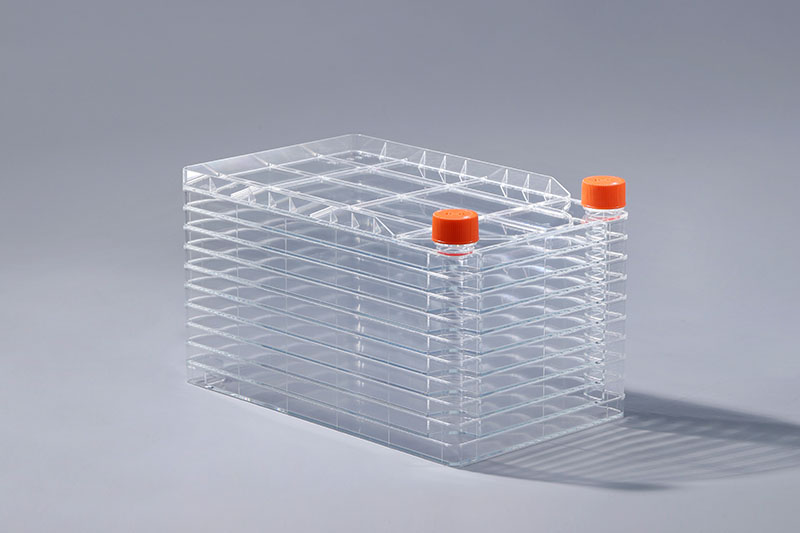According to the different growth methods, cells are divided into two types: adherent cells and suspension cells. These two types of cells have different requirements for the growth surface of the culture vessel, so cell factories generally have two different surfaces for customers to choose from.
TC treated surface: It is mainly used for adherent cell culture. Adherent cells need to be attached to the surface of the support to grow, and only the hydrophilic solid interface can attach cells. Cell factories are generally produced from polystyrene raw materials. This raw material itself is hydrophobic, and its ability of cell adsorption and protein binding is very poor, so that cell adsorption and growth are very weak and unstable. After a special treatment process, a hydrophilic group will be introduced on the surface, so that the cell adsorption and protein binding ability will be very stable, which is more suitable for cell growth.
Surface not treated: It is mainly used for suspension cell culture. The growth of this type of cells does not depend on the surface of the support and grows in a suspended state in the culture medium. Therefore, when selecting the culture vessel, select the one that has not been treated with TC, but generally TC Treated surfaces can also be used for suspension cell culture.
In general, the common surfaces of cell factories are mainly divided into two types: TC-treated and non-TC-treated. Some cells that are picky about the surface (such as nerve cells and some primary cells) also require extracellular matrix to be coated on the surface of the container to enhance Adherent properties of cells.
The FAI climbed 5.9 percent year-on-year in the first 11 months of 2018, quickening from the 5.7-percent growth in Jan-Oct, the National Bureau of Statistics (NBS) said Friday in an online statement.
The key indicator of investment, dubbed a major growth driver, hit the bottom in August and has since started to rebound steadily.
In the face of emerging economic challenges home and abroad, China has stepped up efforts to stabilize investment, in particular rolling out measures to motivate private investors and channel funds into infrastructure.
Friday's data showed private investment, accounting for more than 60 percent of the total FAI, expanded by a brisk 8.7 percent.
NBS spokesperson Mao Shengyong said funds into weak economic links registered rapid increases as investment in environmental protection and agriculture jumped 42 percent and 12.5 percent respectively, much faster than the average.
In breakdown, investment in high-tech and equipment manufacturing remained vigorous with 16.1-percent and 11.6-percent increases respectively in the first 11 months. Infrastructure investment gained 3.7 percent, staying flat. Investment in property development rose 9.7 percent, also unchanged.
 English
English



















































